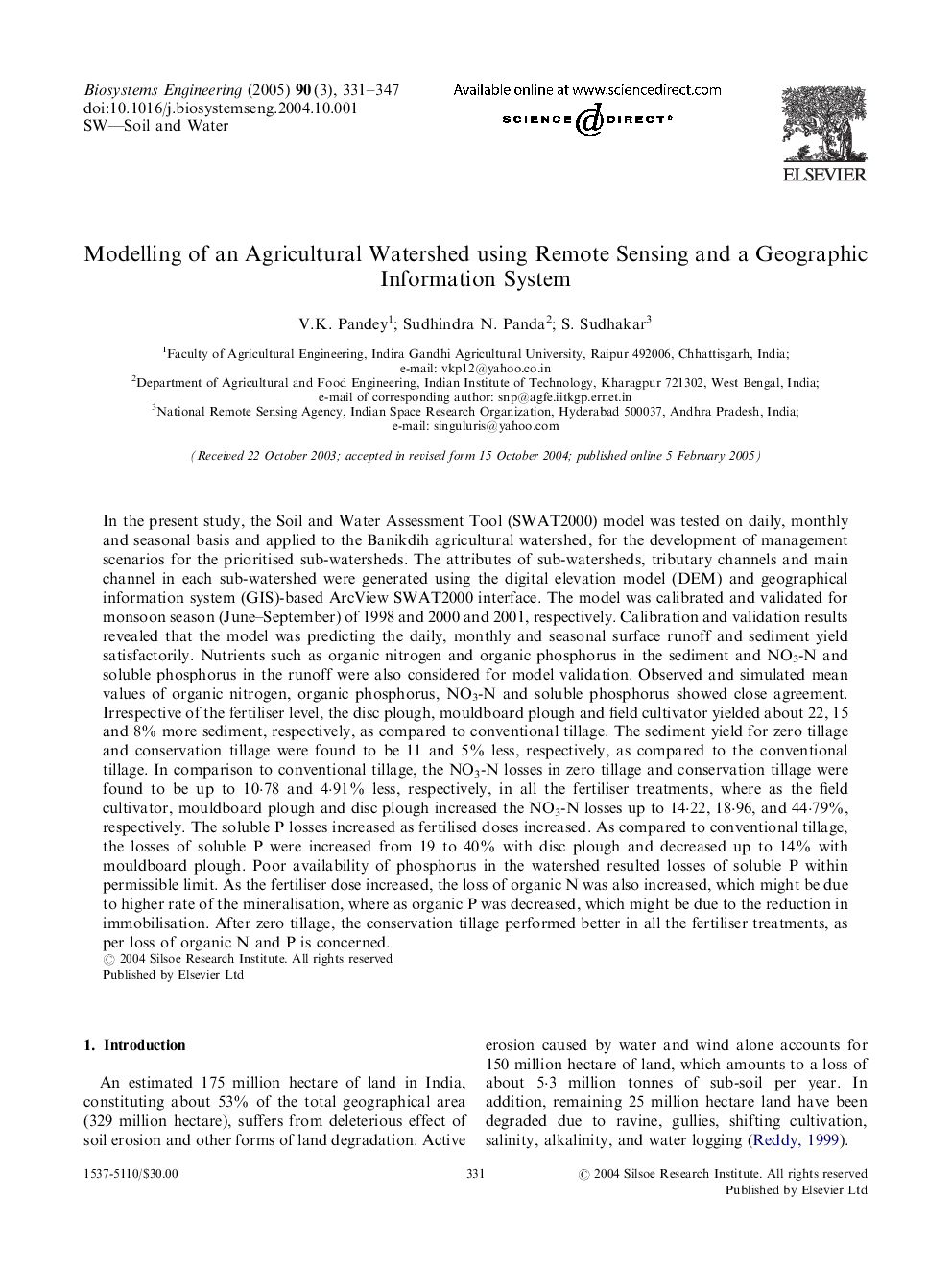| کد مقاله | کد نشریه | سال انتشار | مقاله انگلیسی | نسخه تمام متن |
|---|---|---|---|---|
| 10679866 | 1013169 | 2005 | 17 صفحه PDF | دانلود رایگان |
عنوان انگلیسی مقاله ISI
Modelling of an Agricultural Watershed using Remote Sensing and a Geographic Information System
دانلود مقاله + سفارش ترجمه
دانلود مقاله ISI انگلیسی
رایگان برای ایرانیان
موضوعات مرتبط
مهندسی و علوم پایه
سایر رشته های مهندسی
کنترل و سیستم های مهندسی
پیش نمایش صفحه اول مقاله

چکیده انگلیسی
In the present study, the Soil and Water Assessment Tool (SWAT2000) model was tested on daily, monthly and seasonal basis and applied to the Banikdih agricultural watershed, for the development of management scenarios for the prioritised sub-watersheds. The attributes of sub-watersheds, tributary channels and main channel in each sub-watershed were generated using the digital elevation model (DEM) and geographical information system (GIS)-based ArcView SWAT2000 interface. The model was calibrated and validated for monsoon season (June-September) of 1998 and 2000 and 2001, respectively. Calibration and validation results revealed that the model was predicting the daily, monthly and seasonal surface runoff and sediment yield satisfactorily. Nutrients such as organic nitrogen and organic phosphorus in the sediment and NO3-N and soluble phosphorus in the runoff were also considered for model validation. Observed and simulated mean values of organic nitrogen, organic phosphorus, NO3-N and soluble phosphorus showed close agreement. Irrespective of the fertiliser level, the disc plough, mouldboard plough and field cultivator yielded about 22, 15 and 8% more sediment, respectively, as compared to conventional tillage. The sediment yield for zero tillage and conservation tillage were found to be 11 and 5% less, respectively, as compared to the conventional tillage. In comparison to conventional tillage, the NO3-N losses in zero tillage and conservation tillage were found to be up to 10·78 and 4·91% less, respectively, in all the fertiliser treatments, where as the field cultivator, mouldboard plough and disc plough increased the NO3-N losses up to 14·22, 18·96, and 44·79%, respectively. The soluble P losses increased as fertilised doses increased. As compared to conventional tillage, the losses of soluble P were increased from 19 to 40% with disc plough and decreased up to 14% with mouldboard plough. Poor availability of phosphorus in the watershed resulted losses of soluble P within permissible limit. As the fertiliser dose increased, the loss of organic N was also increased, which might be due to higher rate of the mineralisation, where as organic P was decreased, which might be due to the reduction in immobilisation. After zero tillage, the conservation tillage performed better in all the fertiliser treatments, as per loss of organic N and P is concerned.
ناشر
Database: Elsevier - ScienceDirect (ساینس دایرکت)
Journal: Biosystems Engineering - Volume 90, Issue 3, March 2005, Pages 331-347
Journal: Biosystems Engineering - Volume 90, Issue 3, March 2005, Pages 331-347
نویسندگان
V.K. Pandey, Sudhindra N. Panda, S. Sudhakar,